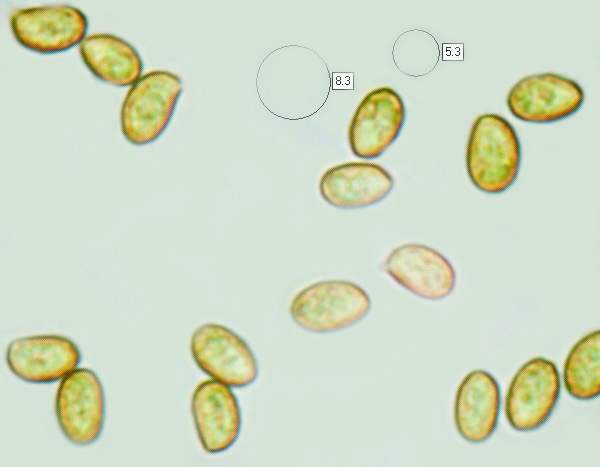Cortinarius flexipes (Pers.) Fr. - Pelargonium Webcap
Phylum: Basidiomycota - Class: Agaricomycetes - Order: Agaricales - Family: Cortinariaceae
Distribution - Taxonomic History - Etymology - Toxicity - Identification - Reference Sources
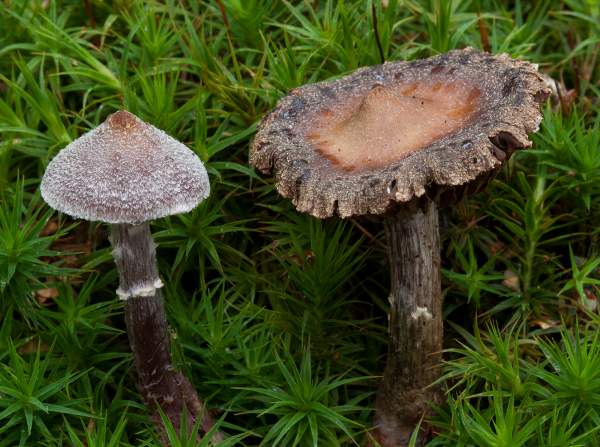
In the generally difficult Cortinarius group of fungi Cortinarius flexipes is one of the few species that are reasonably easy to identify from macroscopic characters alone; however, you really must find several specimens at different stages in their development. Cap shape and colour are very variable features and they can change considerably as the fruitbody matures. What is particularly distinctive about this webcap is its odour: it smells like pelargoniums - those house plants that many people (wrongly) call geraniums.
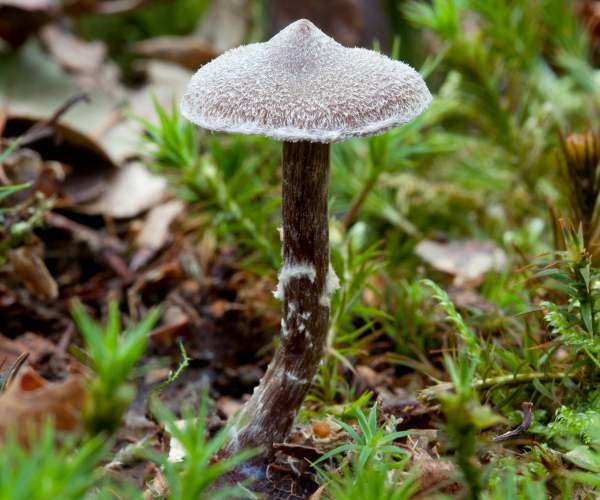
Two varieties of this species, var. flexipes and var. flabellus, are recognized by some authorities. They differ in the degree of scaliness of the caps. Described and illustrated here is Cortinarius flexipes var. flexipes with its very scaly cap. (The caps of var. flabellus are almost entirely smooth.)
Distribution
Cortinarius flexipes var. flexipes is fairly common throughout Britain and Ireland in coniferous forests and in mixed woodlands with birches; this webcap is also common and widespread in North America.
Taxonomic history
In his Synopsis Methodicae Fungorum of 1801, Christiaan Hendrik Persoon described this webcap mushroom and gave it the name Agaricus flexipes. (In the early years of fungal taxonomy most of the gilled mushrooms were included initially in the genus Agaricus!)
It was the great Swedish mycologist Elias Magnus Fries who, in 1838, transferred the Pelargonium Webcap to the genus Cortinarius, thereby creating its currently-accepted scientific name Cortinarius flexipes.
Synonyms of Cortinarius flexipes include Agaricus flexipes Pers., Cortinarius flexipes (Pers.) Fr., and Cortinarius paleiferus Svrcek.
The vast genus Cortinarius is subdivided by many authorities into subgenera, and the Pelargonium Webcap belongs to the subgenus Telamonia.
Etymology
The generic name Cortinarius is a reference to the partial veil or cortina (meaning a curtain) that covers the gills when caps are immature. In the genus Cortinarius most species produce partial veils in the form of a fine web of radial fibres connecting the stem to the rim of the cap.
Just as it sounds, the specific epithet flexipes refers to a 'bent or flexible' stem, and for this mushroom the stems are indeed usually bent rather than being exceptionally flexible.
Toxicity
This mushroom is recorded in many field guides as 'suspect'. Because several of the webcaps are known to be deadly poisonous (and some research even suggests that all Cortinarius species may contain at least small amounts of the toxins concerned), the Pelargonium Webcap should in our opinion never be gathered for eating.
Identification guide
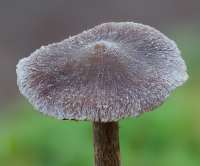 |
CapThe cap of Cortinarius flexipes var. flexipes is 1 to 4cm in diameter, at first convex with a web-like cortina covering the gills, becoming bell-shaped and eventually flattening or even turning up irregularly at the edges; usually retaining a sharp central umbo. The cap surface is hygrophanous, dark grey to violet-brown when moist, becoming pale fawn when dry. The surface is covered with white scales. |
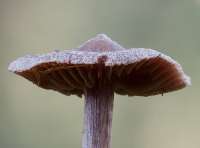 |
GillsAdnate, moderately crowded, sometimes with slightly toothed edges; at first greyish buff maturing rust brown. StemThe fibrous brown stem has a violaceous flush towards the apex and a distinct white ring zone left by the cortina (the partial veil), with other white cottony velar remains adhering to the stem below the ring zone; 3 to 7mm in diameter, often tapering in towards a slightly bulbous base; between 4 and 8cm long. |
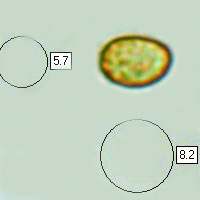 |
SporesBroadly ellipsoidal to subglobose; surface minutely roughened, 7.5-9 x 5-6.5µm; inamyloid. Spore printRust-brown. |
Odour/taste |
Odour of pelargniums (house plant so-called 'geraniums'!). Taste not significant. (It is unwise to taste any Cortinarius species, as several of them are deadly poisonous.) |
Habitat & Ecological role |
In mixed woodland, most often in small groups under birches and spruces, nearly always with moss. This is a mycorrhizal mushroom and is often found on the edges of plantations containing spruce and birch. |
Season |
July to November in Britain and Ireland. |
Similar Species |
Cortinarius hemitrichus, the Frosty Webcap, is similar in appearance but lacks the strong smell of pelargoniums. |
Reference Sources
Fascinated by Fungi, 2nd Edition, Pat O'Reilly 2016, reprinted by Coch-y-bonddu Books in 2022.
Funga Nordica, Henning Knudsen and Jan Vesterholt, 2008.
British Mycological Society, English Names for Fungi
Dictionary of the Fungi; Paul M. Kirk, Paul F. Cannon, David W. Minter and J. A. Stalpers; CABI, 2008
Taxonomic history and synonym information on these pages is drawn from many sources but in particular from the British Mycological Society's GB Checklist of Fungi.
Acknowledgements
This page includes pictures kindly contributed by Dave Kelly.
Fascinated by Fungi. Back by popular demand, Pat O'Reilly's best-selling 450-page hardback book is available now. The latest second edition was republished with a sparkling new cover design in September 2022 by Coch-y-Bonddu Books. Full details and copies are available from the publisher's online bookshop...
